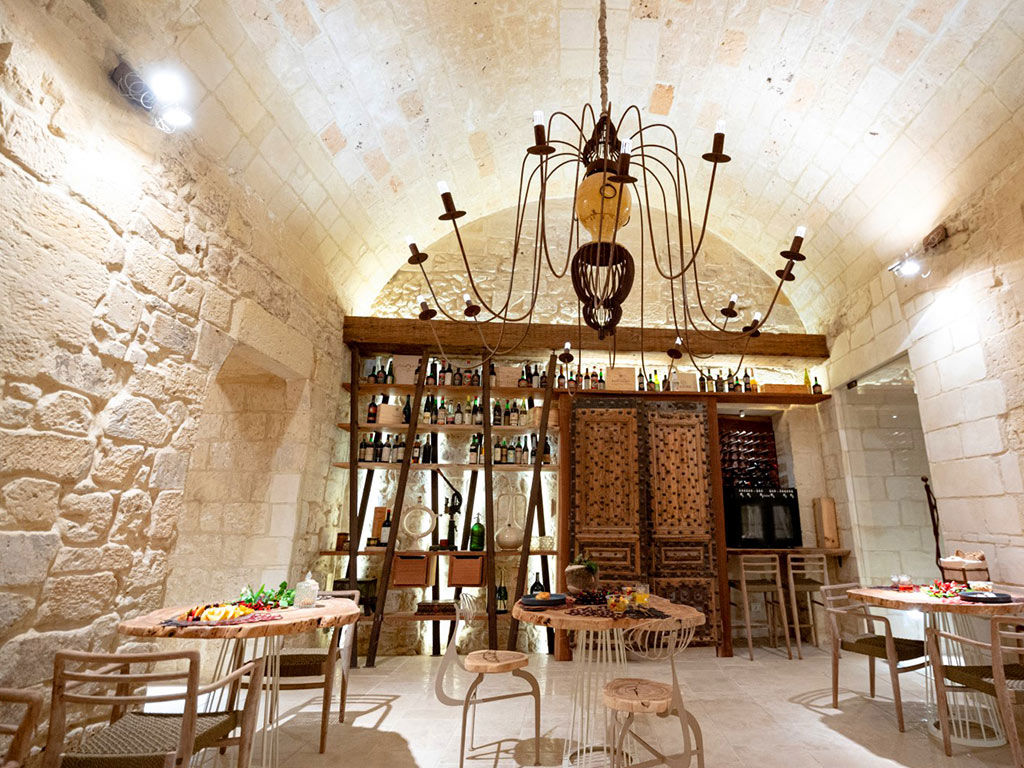Myths and legends intertwine in the history of this antique location, a fact that is confirmed by the discreet and precious details that can be glimpsed on the facade, among the golden reflections of the “pietra leccese” (the local limestone of Lecce): a small statue of Saint Oronzo, the first bishop of Lecce who lived during the Nero’s persecutions and became the Saint Protector of the city after the plague of 1656. An antique belief, passed down verbally, has it that Pollicastro was built on the ruins of the Saint's house.
At the main entrance, on the Catalan- Durrës portal, adorned with a slightly lowered archway, you can admire a statue of an angel holding a ciambella (ring-shaped bread), peering over you.
A 17th-century manuscript reveals that in 1219, Saint Francis of Assisi knocked on that portal to beg for food and saw the apparition of a young pageboy with a big white bread in his hands that suddenly disappeared. This episode was considered miraculous and, to commemorate the event, an angel that offers a typical bread of Lecce, known as “puddhricasciu”, had been sculpted on the portal. Hence, comes the name “Isola del Pollicastro” which was long attributed to the entire complex of houses standing before the monastery of San Matteo.

eng
Benefits
Best price guarantee
Special Offers
Customised living room solutions





